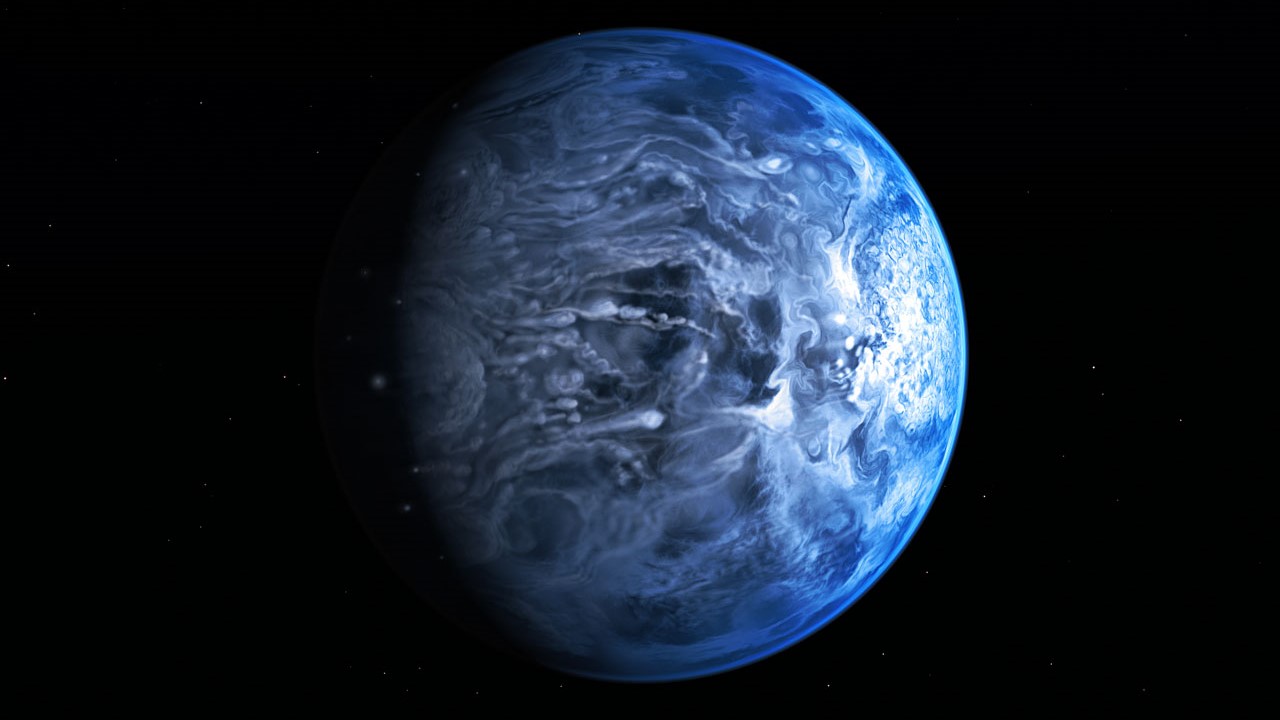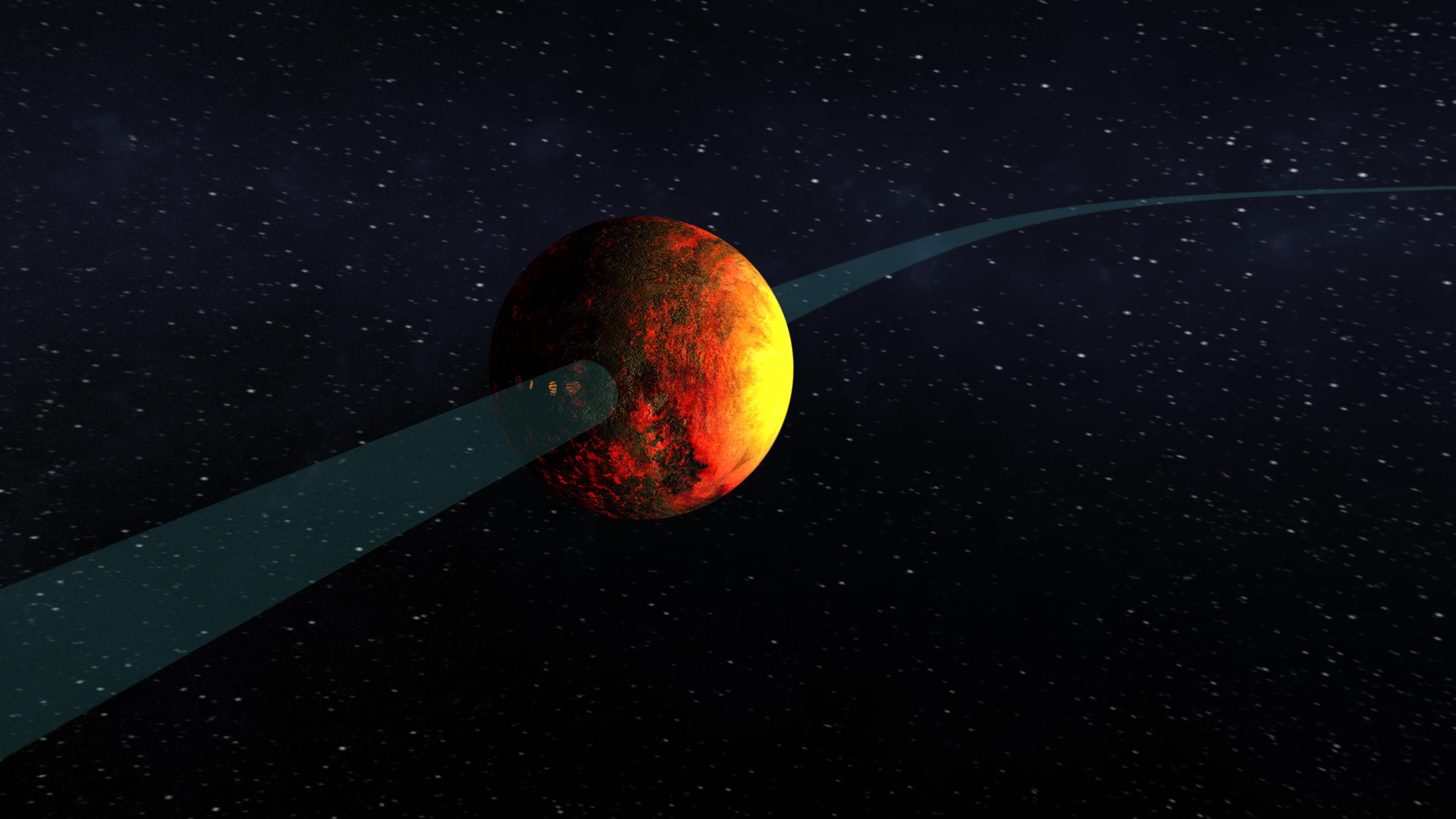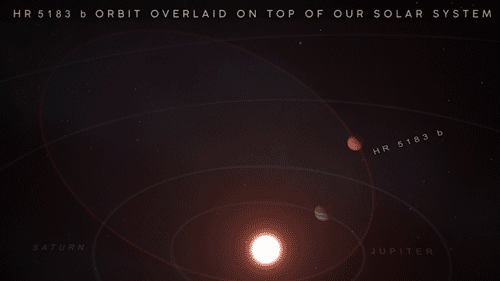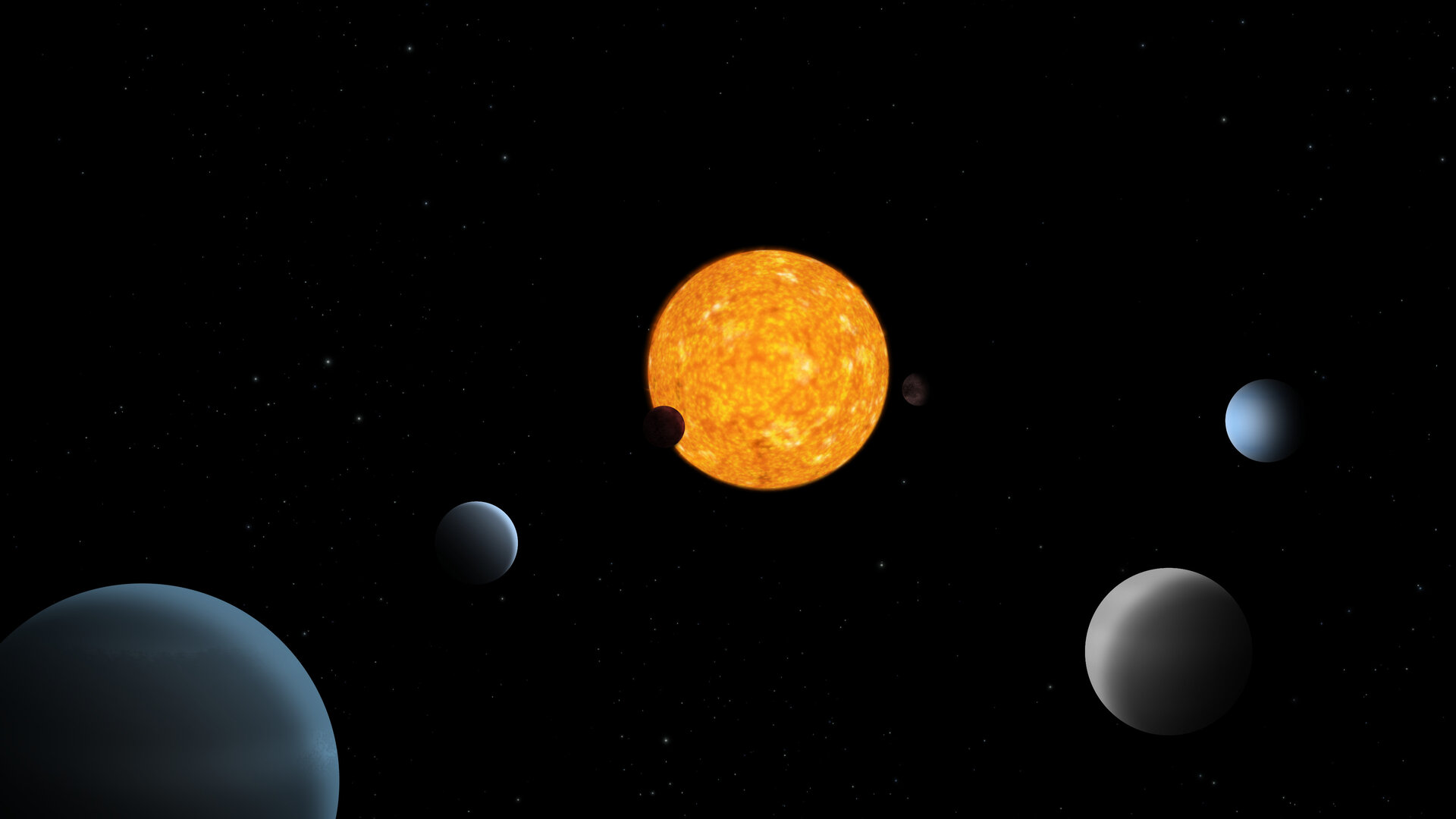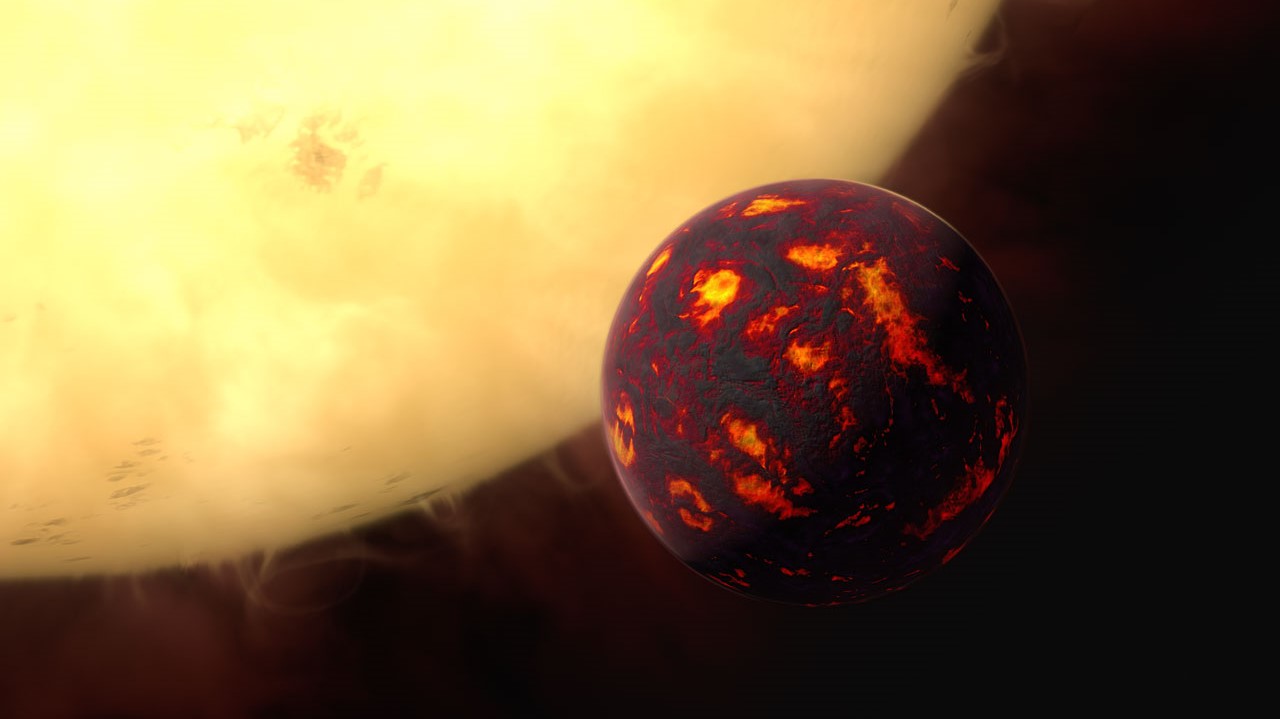These 10 super extreme exoplanets are out of this world
The more we learn about exoplanets, the more we realize the universe is stranger than we ever knew.
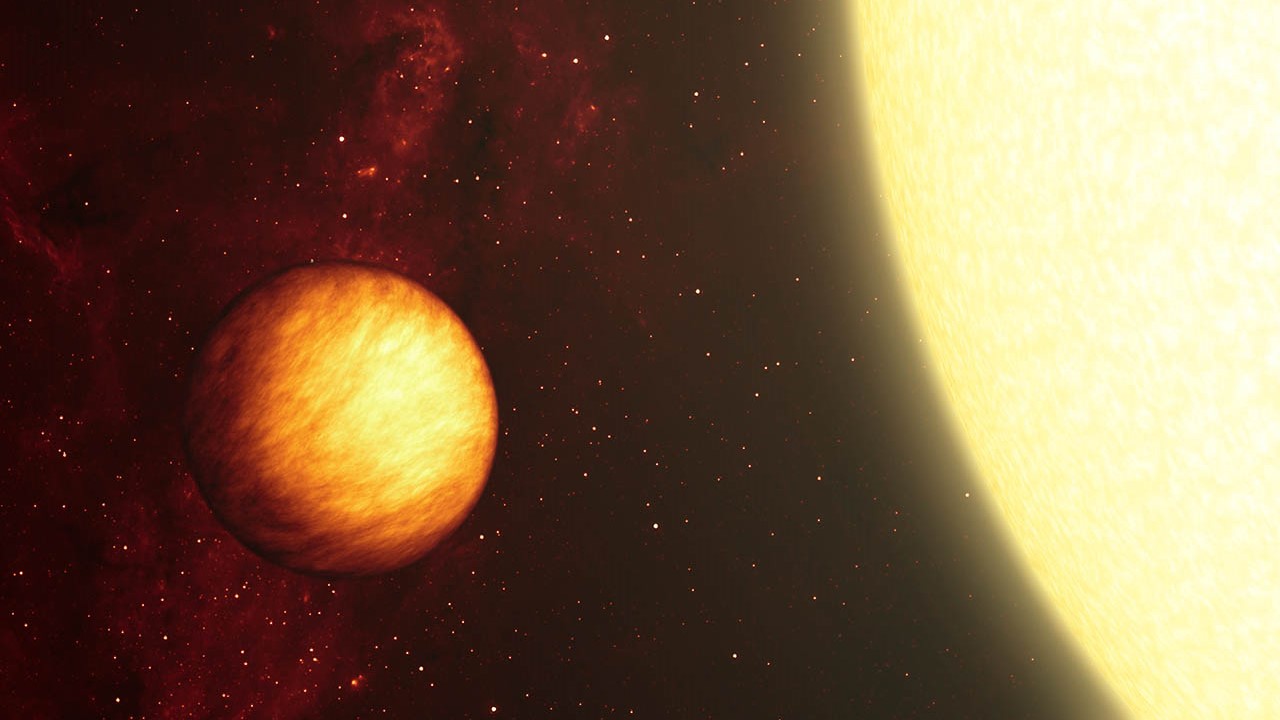
It's almost hard to believe that until the early years of the 1990s, astronomers had yet to discover a planet outside the solar system.
Even though scientists were certain that other stars orbited other stars, there was little evidence of other planetary systems until the discovery of two extrasolar planets — or exoplanets — orbiting the pulsar PSR 1257+12 in 1992 by Aleksander Wolszczan and Dale Frail, as logged in the journal Nature.
This initial discovery was soon followed by the observation of 51 Pegasi b — the first exoplanet discovered around a sun-like star — in 1995, for which astronomers Michel Mayor and Didier Queloz were awarded the 2019 Nobel Prize in Physics.
Related: 10 exoplanets that could host alien life

This article is brought to you by All About Space.
All About Space magazine takes you on an awe-inspiring journey through our solar system and beyond, from the amazing technology and spacecraft that enables humanity to venture into orbit, to the complexities of space science.
Since 1995, our exoplanet catalog has rapidly expanded. We have now confirmed over 4,000 worlds outside our solar system, with a further 7,000 or so suspects waiting to be classified, according to NASA.
As our observation methods improve, this discovery process has only really just begun. And later this year, the James Webb Space Telescope (JWST) will launch, with part of its mission dedicated to search for exoplanets.
A surprising factor has started to present itself as we learn more about worlds outside the solar system; the universe is weird. Really weird. From worlds that rain iron and glass to diamond worlds and planets that have escaped the grip of their parent stars, our burgeoning exoplanet catalog demonstrates that our own solar system is reassuringly boring.
Breaking space news, the latest updates on rocket launches, skywatching events and more!
WASP-76b: The exoplanet that rains molten iron
Spotted in 2013 and further investigated by the ESPRESSO instrument on the Very Large Telescope in 2020, WASP-76b is a planet that is tidal-locked to its parent star BD+01 316. This means that one side of the planet permanently faces the star causing scorchingly hot temperatures of around 4,532 degrees F (2,500 degrees C) — hot enough to vaporize iron.
The star-facing side of WASP-76b is roasted by radiation that is thousands of times more intense than that Earth receives from the sun, while the side that faces away from the F-type star experiences perpetual night. Yet even though the "dayside" of the planet experiences hellish temperatures, that doesn't mean that conditions on the "nightside" are a walk in the park.
The side of WASP-76b that faces away from the planet's parent star is cooler by at least 1,832 degrees F (1,000 degrees C), but this means that when iron vapor is carried across the hemisphere by powerful winds, they are cooled, forming liquid droplets. These droplets of molten iron then fall, bombarding the cooler side of the planet.
The key clue that allowed astronomers to discover the presence of these iron rains came when the ESPRESSO instrument was used to investigate WASP-76b's atmosphere, and no traces of the element were found on one side of the world. WASP-76b isn't the only planet that experiences nightmare rains of this nature. As is often the case with exoplanets, further discoveries don't just up the ante, they make things a whole lot stranger.
HD 189733 b: Showers of molten glass
From space, HD 189733 b may appear to be a beautiful and tranquil world, resembling a giant glassy blue marble. With exoplanets, though, appearances can be deceptive, and this definitely the case for this gas-giant planet that completes an orbit of its star in just 2.2 days.
In fact, its beautiful blue hue arises from its deadly weather, particularly the molten glass rains that pelt the planet's surface. Yet, this isn't the extent of the planet’s almost maniacal weather conditions. The exoplanet — discovered in 2005 by both NASA’s Chandra X-ray Observatory and ESA's XMM Newton's X-ray telescopes — also experiences winds of around 5,600 miles (9,000 kilometers) per hour. These supersonic winds cause the exoplanet’s glass rains to arc sideways towards the ground rather than just falling, also picking up silicate particles, turning them into microscopic projectiles.
HD 189733 b isn't just interesting to astronomers because of its unusual and hazardous weather, though. The giant exoplanet has been observed to possess an atmosphere that is much larger than scientists would expect for such a world, according to NASA. This extended atmosphere works to catch more of the considerable radiation HD 189733 b receives from its parent stars thanks to its perilously close orbit, meaning the gas giant experiences temperatures as high as 1,700 degrees F (930 degrees C).
The fact that the exoplanet's atmosphere is capturing so much intense radiation from the stars of the HD 189733 binary system means that it is rapidly being stripped away to space. All may not be lost, however, as another extreme exoplanet demonstrates that sometimes depleted atmospheres get a second chance.
Gliese 1132b: The planet that grew a second atmosphere
Gliese 1132 b is similar to Earth in a striking number of ways. Its radius is only slightly larger, as is its mass. Even its age — 4.5 billion years old — is similar to that of our planet. But this world does have one striking difference, it orbits much closer to its red dwarf parent star, completing an orbit in just 1.6 Earth days. This proximity results in Gliese 1132 b experiencing a much higher surface temperature than our planet at 278 degrees F (137 degrees C), with the intense radiation stripping the exoplanet's atmosphere.
Yet, astronomers have recently discovered that something extraordinary is happening on Gliese 1132 b. The gravitational influence of its star — 20% larger than the sun — creates intense tidal forces that squeeze and stretch the planet. This "flexing" gives rise to violent volcanic activity and causes gases to rush to the world’s surface.
These gases are building the world a second atmosphere, according to NASA. Whilst this is exciting in itself being the first time astronomers have ever spotted anything like this, the "regrown" atmosphere due to its origin also provides astrogeologists with a unique opportunity to study the interior chemical composition of an exoplanet by proxy.
Kepler-10b: In a galaxy far, far away…
Kepler-10b orbits close to its host star — similar to the sun — at a distance that is a twentieth of the orbit of Mercury. This results in an orbit less than an Earth-day and a surface temperature hotter than 2,372 degrees F (1,300 degrees C).
Because Kepler-10 b — discovered in 2011 by the Kepler telescope — is tidally locked to its star it also creates molten droplets of iron and silicates. The planet’s surface is likely covered with lava much hotter than that found on Earth. Because the harsh radiation from its host star has stripped away its atmosphere, these droplets on Kepler-10b won't fall on the nightside of the planet, are instead blown clear of its surface by stellar winds, giving it a fiery tail.
Kepler-10 b isn't the only lava world discovered by the Kepler telescope. In 2013, the space telescope also found the exoplanet Kepler-78b — 40 times closer to its host star than Mercury—that completes a full orbit in a matter of hours. The result is an Earth-like world dominated by lava which has been described by astronomer Dimitar Sasselov as "an abomination."
Given their broiling lava surfaces, it's little wonder that these exoplanets have been compared to Mustafar, the planet in the Star Wars franchise that hosts a lightsaber duel between Obi-Wan Kenobi and Anakin Skywalker. The lava of that fictional world results in hideous injuries to the young Jedi that force him to wear the iconic black armor and breathing apparatus of Darth Vader. Perhaps when considering a world to hold a duel to the death, somewhere that offers a cooler climate may be advisable. Fortunately, some exoplanets offer radically divergent conditions.
Upsilon Andromeda b: A world of fire and ice
Upsilon Andromeda b is another exoplanet that is probably tidally locked to its host star, completing an orbit in just under five days. What makes this planet — which was previously known as Saffar — an extreme world is the radical difference in temperature between its dayside and nightside.
Whilst the dayside experiences temperatures as high as 2,912 degrees F (1,600 degrees C), the nightside is considerably cooler, reaching temperatures as low as minus 4 degrees F (minus 20 degrees C). This means that passing the hemisphere of this world could be considered equivalent to jumping into a volcano.
While this is by no means the only tidally locked Hot Jupiter, the others we have discovered don't seem to feature such radical disparities in temperature between their star-facing and star-ignoring sides. The reason this exoplanet experiences such a radical difference in temperature could be due to the tremendous size of its parent star Upsilon Andromedae A, or the fact that the star possesses a hot spot almost directly "overhead" this exoplanet, according to NASA.
By now, you might well be getting the impression that all exoplanets are hot, violent worlds that exist close to their parent stars. The fact is, the closer a planet's orbit brings it to its host star, the easier it is to spot. This means the exoplanet catalog is bursting with larger worlds that have tight orbits. There are some notable exceptions, however.
HR 5183 b: The whiplash planet
In terms of exoplanet discoveries, HR 5183 b — a "Super-Jupiter" three times the mass of the solar system's largest planet — is unique, as its orbit is highly eccentric, both literally and figuratively. While most planets trace out a mostly circular orbit, this gas giant traces out an egg-shaped orbit around its parent star HR 5183, according to astronomers at Caltech.
Astronomers discovered the exoplanet by the tiny wobble its gravity causes upon its parent star, which in turn causes a dip in brightness. The process took a staggering 20 years of observations with three telescopes, including Hawaii's W. M. Keck Observatory. Despite this long period of observation, we are yet to see the world complete a full orbit, with researchers estimating that this could take between 45 to 100 Earth years — probably 74 years.
If HR 5183 b was to follow its orbit in the solar system, it would pass closer to the sun than Jupiter, and then move to the outer edges of our planetary system swinging past Neptune. Highly eccentric orbits such as this have been observed before, but normally by planets and other objects that are much closer to their host stars.
If HR 5183 b's loose association with its parent star is something of a surprise, some worlds have gone to even further extremes, disassociating with their parent stars entirely to wander the universe alone.
OGLE-2016-BLG-1928: Going rogue
Astronomers believe that the Milky Way could be teeming with cosmic orphans — exoplanets that have broken free of their parent stars to wander their galaxies alone. These planets are believed to form in traditional ways around stars, but are later flung away by gravitational interactions with other planets.
Because exoplanets are usually spotted through the effect they have on their host stars, this makes these homeless planets almost impossible to spot. This is especially true when they are Earth-sized rocky planets. That's what makes the discovery of the rogue exoplanet OGLE-2016-BLG-1928 as it wanders the Milky Way so special. While it isn't the first rogue planet to be discovered, it is the smallest, with other examples much similar in size to Jupiter.
The rogue terrestrial world was spotted in late 2020 using a technique called gravitational microlensing, the deflection and focusing of light from a distant star as an object passes in front of it. The duration of the change in the light profile of these distant sources increases with the mass of the intervening object. The disturbance caused by OGLE-2016-BLG-1928 lasted just 41 minutes, thus telling astronomers that it was the smallest rogue spotted using this method thus far. OGLE-2016-BLG-1928 is remarkable because of its lack of association with a planetary system, but for other exoplanets, it's this relationship that makes for something special.
The TOI-178 system: A system of harmony and chaos
At first glance, the planetary system TOI-178 may look like any other set of worlds. But, a closer and more prolonged observation reveals that at least five of this system's six worlds are locked in a rhythmic dance with each other.
The five outer planets exist in an 18:9:6:4:3 resonance. This means the first exoplanet in the chain — the second closest to the star overall — completes 18 orbits as the second in the chain completes nine, the third completes six, and the fourth completes 4, and the fifth — the sixth planet overall—completes three orbits. This means that the planets align at regular intervals as they orbit their orange dwarf host star.
This complex chain of resonance likely indicates a planetary system that has remained undisturbed by gravitation interactions or collisions with other systems since its formation. That means the system could be crucial in the study of how planetary systems form and evolve.
Yet, where we find order in the cosmos, there is often also chaos. The compositions of the planets that make up the TOI-178 system don't display the harmony exhibited by their motion. Next to a dense terrestrial Earth-like world is a "puffed-out" low-density planet, followed by an exoplanet with a density similar to that of Neptune.
55 Cancri e: The universe's most valuable exoplanet
Another star that orbits close to its host stars, taking under 18 hours to complete an orbit, 55 Cancri e is also inhospitably hot—reaching temperatures as high as 4,172 degrees F (2,300 degrees C). But what really sets this world apart is its composition, which makes the exoplanet, formally known as Janssen, perhaps the most conventionally valuable object in the universe.
The fact that 55 Cancri e is twice the size of Earth, but has almost 9 times the mass, led astronomers to propose that this Super-Earth could be composed of high pressurized carbon in the form of graphite and diamond mixed with some iron and other elements, according to NASA.
The estimated value of 55 Cancri e is estimated to be 384 quadrillion times more than Earth's entire Gross Domestic Product (GDP), which was valued at 70 USD in 2011. Some astrophysicists suggest that such diamond worlds could form fairly regularly when protoplanetary dust clouds that contained high ratios of carbon collapse to form planets.
The idea that 55 Cancri e is made of diamond has been challenged since the exoplanet was first discovered in 2004, moving in and out of favor, proving diamonds may not be forever. Yet despite all these extreme worlds, the most extraordinary exoplanets may still be out there for us to discover, and they may exist in systems of the likes that we have never encountered before.
Blanets: Black holes' extreme exoplanets
The most extreme exoplanets may not form around stars at all, but instead could orbit supermassive black holes. Planets form from the gravitational collapse of over-dense areas of protoplanetary clouds of gas of dust and supermassive black holes at the heart of active galactic nuclei (AGN) sit at the center of massive churning discs of such materials.
Currently, there is no evidence that such black-hole-orbiting planets — or "blanets" — actually exist, but recent research modeling the dynamics of these discs of gas and dust does suggest that under certain conditions planet formation should occur in such regions. Should such processes occur, blanets would form much further out from supermassive black holes than most planets do from their parent star. So distant in fact, that it could take a million years for such a world to complete an orbit!
Radiation from the AGN could help provide a constant supply of fresh material for blanet formation, with the result of this could be runaway formation, meaning blanets could reach sizes much more titanic than "regular" exoplanets. Blanets would be less likely to share other similarities to Earth or Jupiter, meaning whole new classes of astronomical objects beyond gas giants and terrestrial worlds to investigate.
With the nearest AGN existing beyond the limits of current exoplanet investigations, the discovery of blanets may have to wait. Until then, astronomy will provide a cavalcade of exoplanet discoveries that challenge our growing understanding of the universe and redefine our place within it.
This article was adapted from a previous version published in All About Space magazine, a Future Ltd. publication.

Robert Lea is a science journalist in the U.K. whose articles have been published in Physics World, New Scientist, Astronomy Magazine, All About Space, Newsweek and ZME Science. He also writes about science communication for Elsevier and the European Journal of Physics. Rob holds a bachelor of science degree in physics and astronomy from the U.K.’s Open University. Follow him on Twitter @sciencef1rst.


